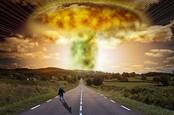Additional papers detailing the orders and messages the US President can issue in the event of apocalyptic crises, such as a devastating nuclear attack, have been declassified and released for all to see.
These government files are part of a larger collection of records that discuss the nature, scope, and uses of the President’s classified emergency documents: These are executive orders, announcements, and statements to Congress, all ready to be signed and sent immediately A doomsday scenario occurs. PEADs are designed to give immediate, extraordinary powers to America’s commanders-in-chief to handle extraordinary events.
PEADs have never been released or uncovered before. They remain secret and their exact details are not publicly known.
However, in recent years, filings revealing internal government discussions and policies on the development and use of PEADs have been collected and released by the Brennan Center for Justice, a nonprofit organization focused on legal policy, through freedom of information requests. These files include PEADs drafted under various administrations from President Dwight Eisenhower during the Cold War to Donald Trump during the COVID-19 pandemic.
Survival of the presidency could be in doubt
“Through these documents, we know that in 2017 there were 56 PEADs in effect, up from 48 a few decades earlier,” reads the center’s landing page for its collection.
For example, some of these contingency measures appear to include authorization to censor news reports, detain those identified as foreign enemies, suspend the arrest warrant, and authorize search and seizure of persons and property.
Take this report for example [PDF] from 1962 by the Contingency Planning Committee during the presidency of John F. Kennedy, which dealt with the problem of a nuclear strike on the capital, potentially wiping out not only the president but anyone who might replace him, and plans to avoid and decentralize government functions required if required.
“The survival of the presidency could be in doubt during a critical decision-making period if the president-elect is lost, since all potential successors typically live and work in the Washington DC area and could be victims of the same attack,” the filing reads. shared by the Brennan Center, explained.
The file also describes rationing to prevent hoarding of essentials like food and water, and efforts to maintain public morale and basic freedoms after an attack.

Revealed: How a 1967 Weather Forecast Stopped Nuclear War
TIED TOGETHER
Another document [PDF] of 1959, which detailed the aftermath of a Soviet nuclear attack, estimated 48 million people would die, with 12 million survivors making up the US population. The nuclear apocalypse remained the greatest risk facing the US government during the Cold War. After 9/11, fear of terrorism took over. That’s what the White House said [PDF] For example, in 2004 the Department of Defense will provide the FBI with the fingerprints of all known or suspected terrorists.
When the COVID-19 pandemic was declared a national emergency, Senator Edward Markey (DMA) proposed [PDF] a bill attempting to force the President to subject all enacted PEADs to legal scrutiny. These documents would have to be released with a redacted version within 180 days to be released publicly.
“The Brennan Center’s Liberty and National Security Program researches PEADs and advocates for greater transparency and control over them,” the think tank said.
The center has had a modest archive of these files on its website as of mid-2020. Now the center has received about 500 pages from the George W. Bush Presidential Library – about 6,000 could not be released because they remain classified.
These documents shed light on the Bush administration as it considers whether it has the authority, in an emergency, to flip a communications “kill switch” that would shut down both Internet connectivity and phone lines. Officials also clashed over the issue of the emergency release of habeas corpus amid a court ruling giving Guantanamo Bay detainees the right to challenge their detention before a judge.
Banning the use of US passports to prevent travel was also on the table in the GWB era and beyond. Much of it is dry, but if you enjoy sifting through shared information, you’ll likely find some weekend reading here. The main thing to remember is that there is next to no oversight of these emergency powers.
“With Congress being unable to fulfill its constitutional role of overseeing the executive branch, the possibility remains that modern PEADs, like their historical predecessors, will sacrifice the constitutional rights and rule of law of Americans in the name of contingency planning,” Brennan said Center’s Benjamin Waldman noted.
“Congress should pass Sen. Ed Markey’s REIGN Act, incorporated into the Protecting Our Democracy Act and the National Security Reforms and Accountability Act, to hold these shadow powers accountable.” ®
 PLC 4ever
PLC 4ever



